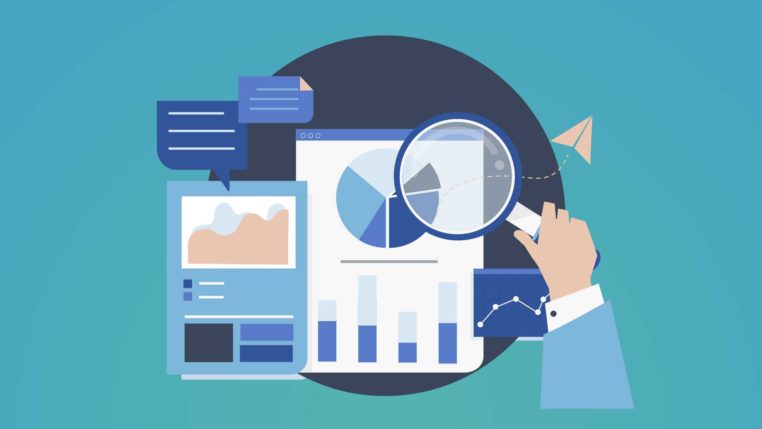All You Need To Know About Growth Marketing

Table of Contents
Today, marketing professionals can access data and tools that enable them to make more informed decisions that improve their business's revenue and result in unprecedented growth.
As a result, growth marketing has become increasingly popular over the last few years. It's built on the principle of constant progress, making customer retention a large part of any marketing strategy.
It's quickly emerged as a buzzword in a strategy meeting, but there's no doubt that growth marketing is central to many businesses today.
The term itself is relatively new, but the principles and concepts behind it aren't.
What Is Growth Marketing?
Successful marketing isn't only about attracting more buyers and acquiring new leads. It involves finding customers who want to stick around for the long term.
After all, what good is an increase in sales without retention?
Growth marketing has redefined the fundamental objective of marketing. Its strategies focus on guiding your clients through the buying process and nurturing them afterward to retain them.
When you figure out the buyer's life cycle, you also understand where and how to reach future prospects. The digital marketing tools available to us today inform you of the strategies you can put in place to retain current customers.
However, growth marketing requires constant vigilance. You have to keep on monitoring trends and tracking key performance indicators. This is because businesses that focus on growth marketing need their customers to return to them and purchase their goods and services again.
How Can Your Company Develop A Growth Marketing Strategy?
There's a five-step process involved in implementing a growth marketing plan for your company. While every business is different, these steps are general guidelines you can use to retain current customers while also acquiring new ones.
Step 1: Find Out Your North Star Metric
Growth comes in various forms depending on the niche you're in. Many B2B tech platforms measure their development through the number of leads they obtain. B2C e-commerce companies can measure their growth through average order value. No matter which industry you belong to, your business will have a comprehensive metric that describes your growth.
This measure is known as the North Star Metric (NSM). You need to define your NSM since it's the metric you have to maximize through tools, tactics, and strategies. Airbnb's NSM is the total number of nights booked, while WhatsApp's is the number of messages a user sends.
Step 2: Determine How Your Product Fits Into The Market
Does your product fulfill a specific need in the market? Many start-ups and small businesses invest resources and time before determining whether their product fits into the market. This is a mistake since your business needs to deliver solutions to real problems in a sizeable market to grow and be profitable.
There are two types of market research methods: primary and secondary. Primary research involves you interacting with the audience directly through focus groups and surveys. You can carry out secondary research by analyzing competitors and manufacturers in the same niche as you through the Internet and digital marketing tools.
Step 3: Data And Analytics
Growth marketing requires continuous analysis of data and dedicated reporting. Nowadays, data tools are accessible for all companies, whether you're part of a big corporation or a start-up. Analytics tools such as Google Analytics track your audience's conversions and traffic across all relevant channels.
Knowledge resources like Markletic are also invaluable as knowledge hubs for B2B companies. Markletic helps you learn actionable strategies you can use to make your business grow.
HubSpot's Marketing Analytics tool enables you to measure how well your marketing campaigns perform and provides you with in-depth reporting. Many analytics tools also allow you to check social media engagement and email opening rates.
Other valuable tools you can use include heatmaps that measure your website's performance, customer relationship management (CRM) solutions that store prospects' contact information and promote engagement, and A/B testing software that helps you make necessary changes to your website.
Step 4: Analyze User Journey
Different businesses have unique buyer journeys that transform the visitor into a paying customer. There are usually three parts to this journey, defined by the top of the funnel (awareness stage), middle of the funnel (consideration stage), and the bottom of the funnel (decision stage).
Your growth marketing strategy needs to comprise content that meets prospects at the stage they're currently in. Content for the awareness stage includes blogs and other starter material that informs the user about your brand and products without being too sales-oriented. Consideration stage content includes whitepapers and more in-depth articles. Decision stage content comprises case studies and product demos.
While many marketing professionals stop after this point, growth marketing requires you to create post-nurture programs for repeat customers. After your clients have purchased from you, you need to retarget them by providing them with customer support and relevant information they may need. Post-nurture content includes instruction blogs, tutorials, emails, and other personalized and targeted information.
You need to utilize every touchpoint possible to reach as many valuable prospects as you can. Retargeting ads, triggered emails, and live chat are great ways to encourage visitors to perform the actions you want. Multi-channel marketing helps you reach the maximum number of leads possible.
Your analytics tools will help you understand the stage at which users generally drop off. Session recording tools such as Hotjar will show you why users drop off. You can use this data to improve the user journey by implementing solutions that address the specific problems buyers face during the relevant stage.
Step 5: Analyze Your Traffic
All businesses need qualified traffic to grow. It's necessary for you to analyze where your visitors come from and how you can encourage qualified traffic towards your business.
There are two types of traffic: organic and paid.
Search engine optimization (SEO) plans enable you to drive organic traffic to your website by using strategies such as link building and keyword research. It improves your website's ranking on search engine result pages (SERPs). This is important because the top three results on any Google SERP receive 71% of all search traffic clicks.
You can direct paid traffic to your website using paid ads on social media platforms like Facebook and Instagram. After this, you can see how well your paid ads and SEO efforts perform using marketing insight tools. The data you receive will allow you to determine whether your ROI is high enough for these investments to be feasible.
Tools such as Semrush are useful to measure your online visibility - on Google and on social media.
Why Is Growth Marketing Important?
Growth marketing nurtures current customers before focusing on acquiring new ones. The underlying principle is that clients who have bought your services or products are likelier to return if you have excellent customer service and offer them a good buyer experience.
Acquiring new customers is also far more expensive than retaining existing ones. Research shows that acquiring a new client is up to five times as costly as retaining a current one. Growth marketing thereby enables businesses to cut down on costs for greater returns.
The secondary focus of growth marketing is customer acquisition. The tools that your marketing team will use while following this strategy will help you find out where prospects are located and the mechanisms through which they find your company. By carrying out an in-depth analysis of these components, you can find the channels through which you have the greatest chance of success.
Finally, a successful growth marketing strategy will result in more significant revenue for your company. You'll balance retention and acquisition to maximize both profit and revenue. This is because growth marketing relies on previous learning to optimize strategies, thereby enabling you to focus your efforts where they're likely to be most fruitful.
In Conclusion
Growth marketing may be a relatively new concept, but companies worldwide have been using its underlying principle for decades. E-commerce companies offer subscriptions and coupons to long-standing customers. Simultaneously, B2B platforms provide clients with valuable information and tutorials to preserve their interest.
Each business's growth marketing strategy will be different since the buyers' journeys and NSMs vary greatly across niches and industries. However, your growth marketing efforts need to focus first on customer retention and then client acquisition. This enables you to cut down the costs associated with the acquisition and utilize your marketing strategy where it's likely to have the greatest success.
Share this article



